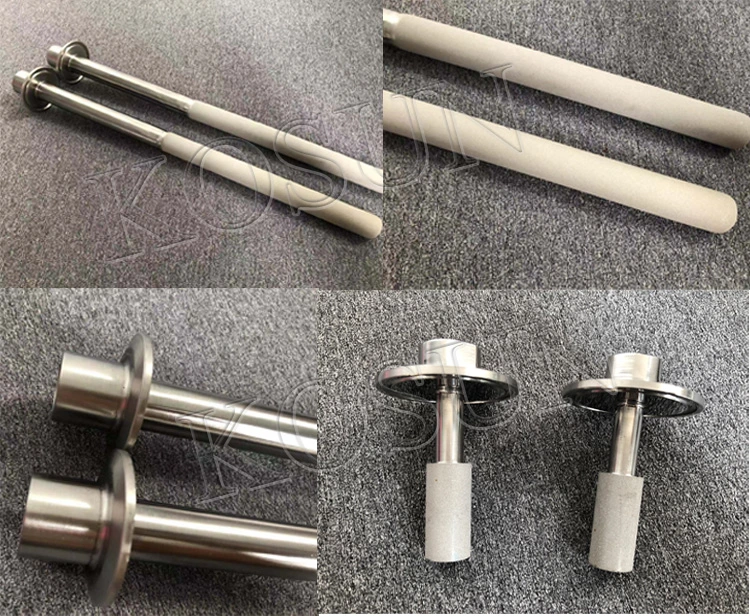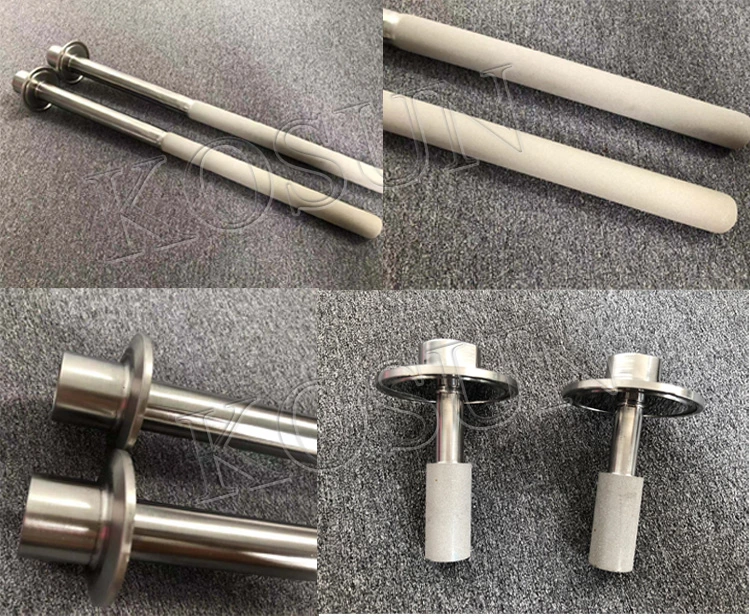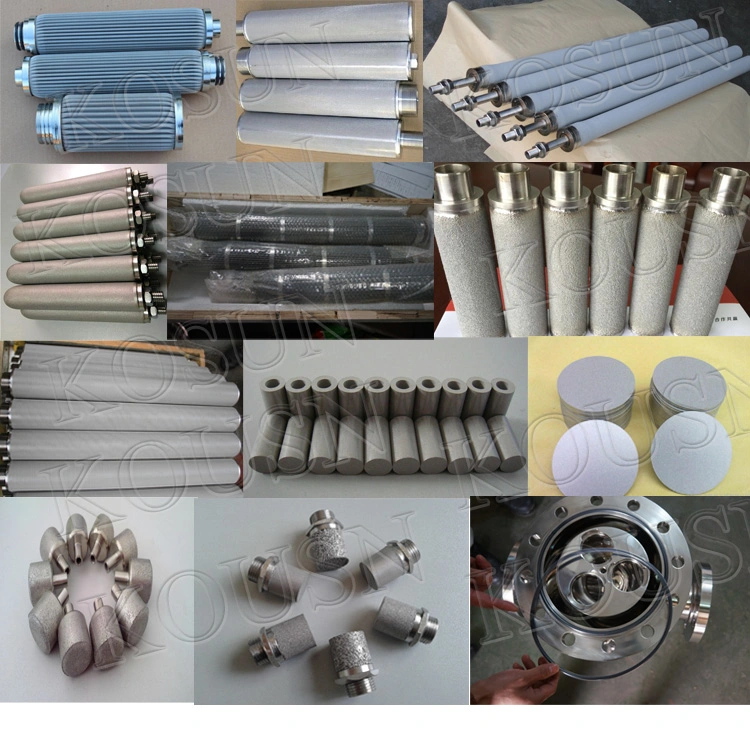Stainless steel brewery carbonation areation stone with NPT and hose barb
carbonating stone carbonation stone are sanitary designed for tank mounting, The most efficient system on the market for carbonation or micro-oxygination. Submersing porous body diffuses CO 2 gas directly into liquid to create carbonation or micro-oxygenation. Using carbonating stone carbonation stone, it is possible to remove excessive quantity of dissolved air.
Stainless steel Oxygenation Aeration Sintered beer carbonation stone
Specification
A diffusion stone has two primary uses for Brewery: a method of adding oxygen to the wort before fermentation begins, and to force carbonate beverages with carbon dioxide.
Adding oxygen to the wort.
Yeast needs oxygen to reproduce before fermentation begins. When wort is boiled, the oxygen is boiled off and it must be replaced after it has cooled down. This can be accomplished by splashing, shaking, vigorous stirring, or most effectively, by using a diffusion stone with either pure oxygen or an air pump.
If using an air pump to dissolve oxygen, approximately 40 minutes are required. You will probably have to do this in two or more stages, because the wort will foam to the top of the primary fermenter. The air pump needs to be a deep-water model to be able to push through the 2 micron filter.
If using pure oxygen, about 40 seconds are required. Try it in two 20 second bursts: one before pitching yeast, and another 3 hours after pitching. High gravity beers may require more time because oxygen does not dissolve as easily in liquids with a high specific gravity.
Force cabonating beverages.
To use a diffusion stone to force carbonate beer, champagne, or sparkling meads, you will need a homebrew kegging outfit with CO2 tank, regulator, lines, and a keg. Simply attach a 24" length of 1/4" ID tubing to the gas side dip tube of your keg with a worm clamp. On the other end of the tubing, attach the diffusion stone. A worm clamp here is your choice. There are charts available online and in books for exact levels of temperature and CO2 pressure to achieve desired carbonation levels. Following is an example for average carbonation in beer. Chill the beer to 4 C. Adjust the regulator to 2 PSI and attach the gas disconnect. Every 3 minutes increase the pressure 2 PSI until 12 PSI is reached. At this point the beer will be carbonated, but it won't hurt to leave it alone in the refrigerator for a few days under pressure.



carbonating stone carbonation stone are sanitary designed for tank mounting, The most efficient system on the market for carbonation or micro-oxygination. Submersing porous body diffuses CO 2 gas directly into liquid to create carbonation or micro-oxygenation. Using carbonating stone carbonation stone, it is possible to remove excessive quantity of dissolved air.
| Connection | 1.5" Tri clamp or as required |
| Length | 25 mm, 48 mm ,100mm 200mm 300mm 400mm 600mm or custom made |
| micron | 2micron |
Stainless steel Oxygenation Aeration Sintered beer carbonation stone
| Material | types | applied range |
| SS, stainless steel , SUS316L | 1/4" Barb, 0.5 micron , 1/4" Barb, 2 micron , 1/4" MFL Thread 0.5 micron, 1-2"TC 2 micron, | carbonated beverage , carbonated beer , aeration of wort , Oxygenation Aeration |
Specification
A diffusion stone has two primary uses for Brewery: a method of adding oxygen to the wort before fermentation begins, and to force carbonate beverages with carbon dioxide.
Adding oxygen to the wort.
Yeast needs oxygen to reproduce before fermentation begins. When wort is boiled, the oxygen is boiled off and it must be replaced after it has cooled down. This can be accomplished by splashing, shaking, vigorous stirring, or most effectively, by using a diffusion stone with either pure oxygen or an air pump.
If using an air pump to dissolve oxygen, approximately 40 minutes are required. You will probably have to do this in two or more stages, because the wort will foam to the top of the primary fermenter. The air pump needs to be a deep-water model to be able to push through the 2 micron filter.
If using pure oxygen, about 40 seconds are required. Try it in two 20 second bursts: one before pitching yeast, and another 3 hours after pitching. High gravity beers may require more time because oxygen does not dissolve as easily in liquids with a high specific gravity.
Force cabonating beverages.
To use a diffusion stone to force carbonate beer, champagne, or sparkling meads, you will need a homebrew kegging outfit with CO2 tank, regulator, lines, and a keg. Simply attach a 24" length of 1/4" ID tubing to the gas side dip tube of your keg with a worm clamp. On the other end of the tubing, attach the diffusion stone. A worm clamp here is your choice. There are charts available online and in books for exact levels of temperature and CO2 pressure to achieve desired carbonation levels. Following is an example for average carbonation in beer. Chill the beer to 4 C. Adjust the regulator to 2 PSI and attach the gas disconnect. Every 3 minutes increase the pressure 2 PSI until 12 PSI is reached. At this point the beer will be carbonated, but it won't hurt to leave it alone in the refrigerator for a few days under pressure.


